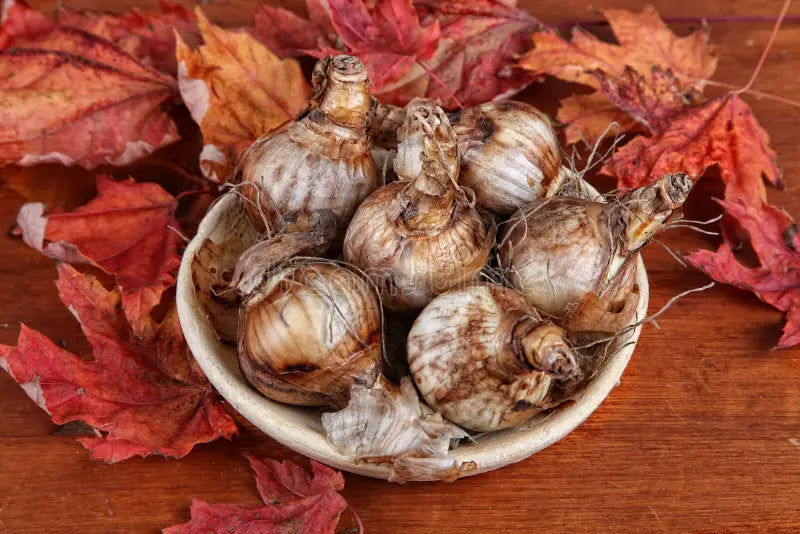
Cheat sheet on Planning Fall Bulbs
Cheat sheet on Planning Fall Bulbs
When autumn arrives, many gardeners start winding down for the season. The last of the summer vegetables are harvested, leaves begin to fall, and flowerbeds are put to rest. But fall is also the perfect time to prepare for next spring’s blooms. Planting bulbs in autumn ensures a vibrant, colorful display once winter fades away. If you’ve ever admired cheerful tulips, delicate crocuses, or sunny daffodils popping up early in the year, chances are they were planted in fall.
This cheat sheet will guide you through the basics of planning, selecting, and planting fall bulbs so that your garden wakes up in style next spring. So, pull up a seat, grab your gardening trowel and let’s dig in!
1. Why Plant Bulbs in Fall?
Fall-planted bulbs are typically spring bloomers. They require a period of cold dormancy during winter, which triggers growth and flowering once temperatures warm. This chilling period is essential—it allows the bulb to develop strong roots and prepare for an early show of color.
By planting in fall, you give bulbs time to establish underground before the soil freezes. Come spring, they burst into life with little effort on your part.
2. Choosing the Right Bulbs
Not all bulbs are created equal, and choosing varieties suited to your region is crucial. Some popular fall-planted bulbs include:
- Tulips – A classic spring favorite, available in countless colors and shapes.
- Daffodils (Narcissus) – Hardy, deer-resistant, and cheerful, with yellow and white blooms.
- Crocuses – Early bloomers that often poke through the snow.
- Hyacinths – Known for their fragrance and dense clusters of flowers.
- Alliums – Tall, globe-shaped blooms that add architectural interest.
When purchasing bulbs, look for ones that are firm, heavy for their size, and free of mold or damage. The bigger the bulb, the bigger (and healthier) the bloom.
3. Timing Your Planting
The best time to plant fall bulbs is when soil temperatures are cool, but not yet frozen—generally after the first frost but before the ground hardens. As a rule of thumb:
- Northern climates – Late September through October.
- Milder climates – October through November, or even December in the warmest regions.
If you live in an area with mild winters where the ground doesn’t freeze, you may need to pre-chill certain bulbs (like tulips and hyacinths) in the refrigerator for 6–8 weeks before planting.
4. Location, Location, Location
Bulbs thrive in sunny locations with well-drained soil. Most require at least 6 hours of sunlight per day once they emerge in spring. Avoid planting in areas prone to standing water, as bulbs can rot in soggy soil.
For best results, work organic matter like compost into your soil before planting. This improves drainage and provides nutrients for strong root growth.
5. Depth and Spacing Made Easy
One of the biggest questions gardeners ask is: how deep should I plant bulbs? A good cheatsheet rule is:
- Plant bulbs 2–3 times as deep as the bulb’s height.
For example:
- Tulips: 6–8 inches deep
- Daffodils: 6 inches deep
- Crocuses: 3–4 inches deep
As for spacing, give bulbs enough room to spread. Smaller bulbs like crocuses can be planted 2–3 inches apart, while larger bulbs like daffodils should have 5–6 inches of breathing space.
Plant bulbs with the pointed end facing up and the root end facing down. If you’re not sure, plant them on their side—bulbs naturally find their way upright.
6. Grouping for Impact
For the most stunning displays, plant bulbs in clusters rather than single rows. Odd-number groupings (like 5, 7, or 9) create a more natural look. A drift of daffodils sweeping across the yard or a cluster of tulips near a walkway provides big visual impact in spring.
Mix early-, mid-, and late-blooming varieties to extend the flowering season. For example, plant crocuses for early spring color, followed by daffodils, then tulips for a layered display.
7. Protecting Your Bulbs
Bulbs are a favorite snack for squirrels, chipmunks, and deer. To protect your investment:
- Cover freshly planted areas with chicken wire or hardware cloth.
- Apply a layer of mulch after planting to insulate the soil and deter critters.
- Consider planting pest-resistant bulbs like daffodils, alliums, or fritillaria.
8. Don’t Forget Aftercare
Once your bulbs are in the ground, water them thoroughly to help settle the soil and encourage root growth. You won’t need to water again unless fall is unusually dry.
After flowering in spring, allow the foliage to die back naturally. This process helps the bulb recharge for next year’s bloom. Resist the temptation to cut down the leaves too early—they are essential for photosynthesis and storing energy.
Quick Cheatsheet Recap:
- Plant in fall before the ground freezes.
- Choose healthy bulbs suited for your climate.
- Plant 2–3 times as deep as the bulb’s height.
- Space appropriately—smaller bulbs closer, larger bulbs farther apart.
- Cluster in groups for big visual impact.
- Protect from pests with wire, mulch, or resistant varieties.
- Let foliage die back after flowering to recharge bulbs.
Planting fall bulbs may seem like a small task now, but it sets the stage for a breathtaking spring display. With just a little planning and care, your garden can burst to life with color, fragrance, and joy when winter’s chill lifts. Think of fall planting as a gift to your future self—a promise of beauty waiting beneath the soil.
So grab your trowel, pick your favorite bulbs, and start digging. Come spring, you’ll thank yourself when your garden greets you with a riot of blooms!
